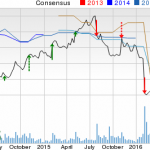Myth Busters – Dividend Stocks Are Safe
In recent years, many investors have been attracted to the “safety” and “wealth-building” appeal of dividend stocks. Therefore, it is prudent to examine history and ask:
Will my net worth take a big hit holding blue-chip dividend payers in the next bear market?
Before we explore the facts, it is important to understand that well-intentioned investors have a habit of repeating the same mistakes over and over again. If we understand the propensity to make mistakes, it is more likely we can reduce the odds of taking a hard-to-recover-from blow to our retirement nest egg and/or estate. Is it a mistake to think of dividend stocks as safe? You can decide after reviewing the evidence.
Dividend Investors Making A Common Mistake

Why did we have a tulip bulb mania in the 1660s, a dot-com bubble in the 1990s, and a housing bubble in the late 2000s? The human emotions of greed and fear have not changed the last 400 years. To refresh our memories, a quick read of the segment below from an April 2000 BusinessWeek article is in order:
Around 1624, the Amsterdam man who owned the only dozen specimens was offered 3,000 guilders for one bulb. While there’s no accurate way to render that in today’s greenbacks, the sum was roughly equal to the annual income of a wealthy merchant. In recent years, as investors have intentionally forgotten everything they learned in Investing 101 in order to load up on unproved, unprofitable dot-com issues, tulip mania has been invoked frequently.
Just The Facts Ma’am
Rather than pontificate about the pros and cons of holding dividend stocks, it is best to focus on their actual performance. Our intent here is not to criticize any article or piece of well-intentioned investment research, but rather to educate investors about the downside risks associated with a buy-and-hold strategy in “safe and reliable” dividend paying stocks.
The 10 Most Popular High-Yielding Dividend Stocks
Our first list of dividend payers was compiled based on the concern that a stock market correction is overdue. The list includes Unilever (UN), General Electric (GE), ConocoPhillips (COP), Vodafone (VOD), Johnson & Johnson (JNJ), Sysco (SYY), Pfizer (PFE), Merck (MRK), Eli Lilly (LLY), and Glaxo SmithKline (GSK). Corrections are followed by rallies to new highs. Therefore, a buy-and-hold strategy can work well during a normal market correction. However, the real test of wealth preservation comes in a bear market. The blurb below from The Street describes the list of 10 stocks that follows:














Leave A Comment